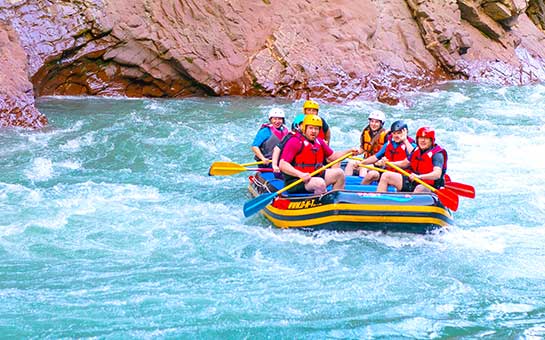Whitewater rafting is a very popular outdoor sport. And, like all adventure sports, it comes with risks. Whitewater rafting travel insurance gives you mental peace so that you are free to enjoy your adrenaline rush.
Travel Insurance for Whitewater Rafting
Standard travel insurance plans don’t usually cover the risks associated with adventure sports. For extreme sports like whitewater rafting, you would need travel insurance for whitewater rafting.
The water rafting company will make you sign a waiver. This waiver does not include insurance coverage for risks; you would need to have the coverage offered by your own whitewater rafting travel insurance to deal with the expenses of any accidents that might occur.
The best travel insurance for adventure sports like whitewater rafting can help provide coverage for:
- Emergency medical and hospital assistance
- Emergency medical evacuation
- Theft or damage of protective gear
- Pre-paid trip protection in case you have to cancel or postpone your trip
Remember, your travel insurance for whitewater rafting will not cover you for rafting along class-6 rapids, as it is deemed extremely dangerous. You won’t be covered if you are intoxicated, refusing to follow instructions, or not wearing correct gear.
Whitewater Rafting Basics
Whitewater rafting is a recreational watersport involving boating downriver on rough water. There are specific techniques and gear involved, based on the degree of danger. Standard equipment includes inflatable or lightweight rafts, paddles or oars, oar pins, and oarlocks. The rafts are usually made of PVC, urethane, or old rubber.
This sport is usually done as a group activity. Your team will be paddling and guiding your raft through rapids. The right method of propelling the raft—using oars correctly to maneuver through hairpin turns—and basic raft repair knowledge are key skills that keep participants safe during whitewater rafting. Along with these, knowing how to swim against current and basic floatation techniques are also essential.
A great degree of teamwork, as well as risk, is involved in this activity. That’s why adventurous sports travel insurance is essential when you indulge in whitewater rafting in a foreign country.
Risks of Whitewater Rafting
This exhilarating extreme sport has a high risk of injuries and accidents. Over the years, fatality rates have fallen due to additional safety measures and supervision by the International Rafting Federation. However, these precautions do not eliminate the risk entirely.
Reports often claim the following risks and causes of fatalities:
- Drowning is a real danger caused by various environmental and personal conditions.
- Overexertion is often the case with tourists or rafters with poor stamina.
- Getting stuck in crevices, rocks, or fallen trees is a very likely hazard, even for professional rafters.
- Hypothermia can happen in ice-cold waters and should be considered before choosing a particular river or time of year to go whitewater rafting.
- Other conditions such as nausea, dehydration, headache, vomiting, and so on can cause problems.
- Impact accidents happen when the rafters may bang, smash, or brush against rocks.
These are activity-based dangers. Injuries sustained while whitewater rafting demand immediate and advanced medical care, which is expensive, especially when you’re not in your home country. Travel insurance for hazardous sports proves invaluable here.
